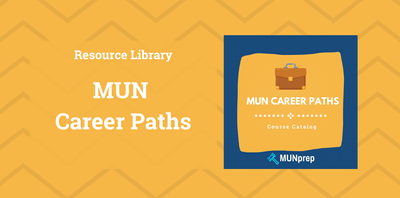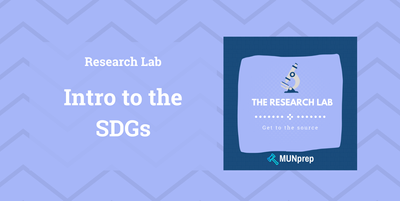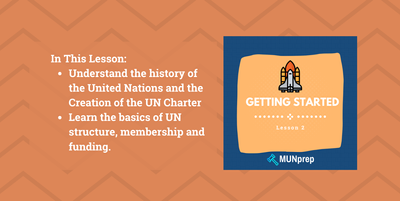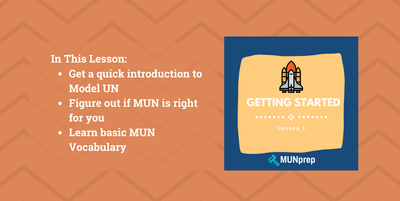MUN Procedure - From Moderated Caucuses to Speakers Lists
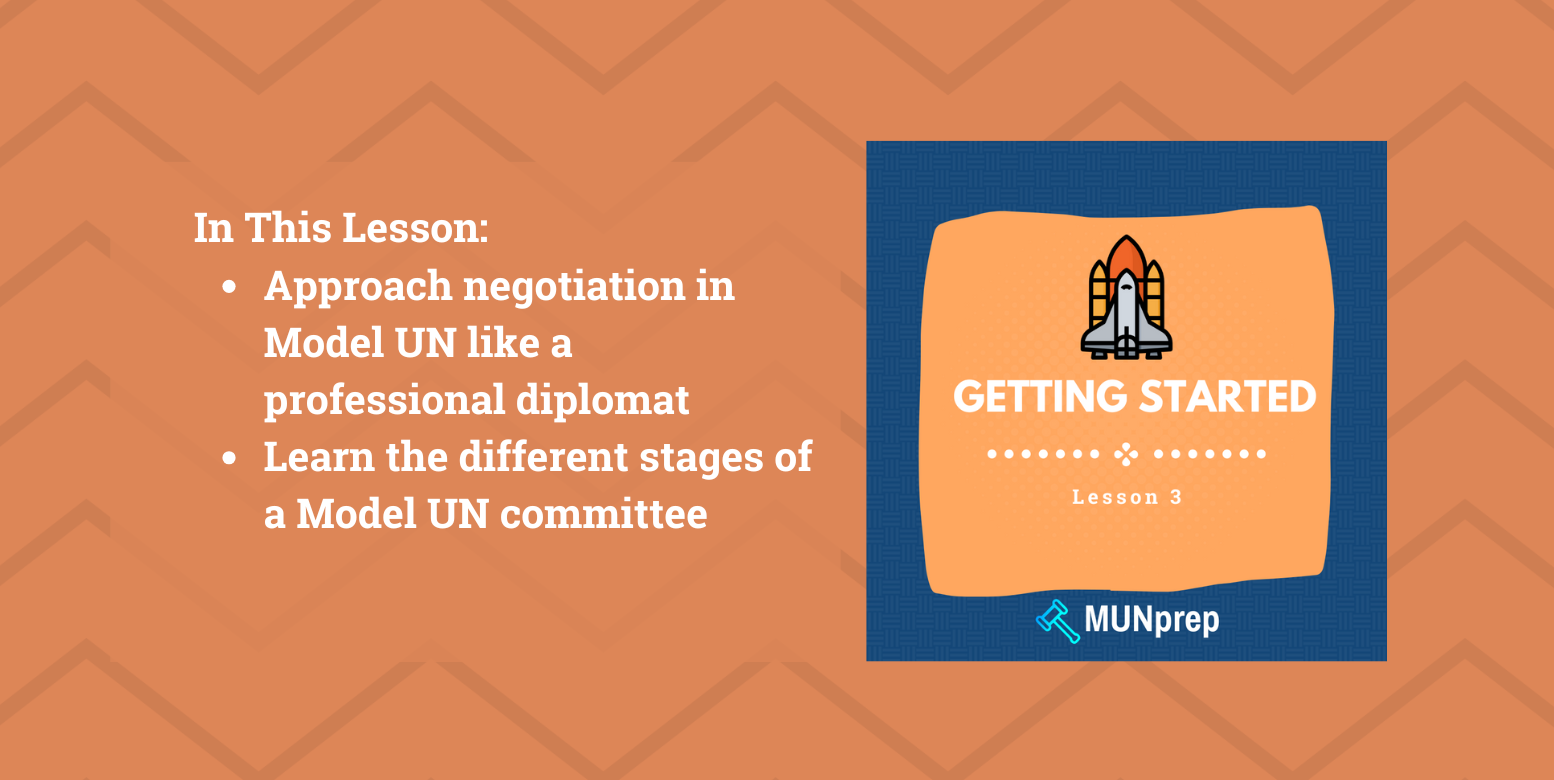
To be an amazing MUN delegate - it's important to understand the basics of conference procedure and diplomacy.
This guide will help you navigate committee sessions, follow the correct protocols, and engage in negotiate diplomatically with your fellow delegates.
But before getting started here - if you haven't already make sure to check out our guides on the Basics of Model UN and an Introduction to the United Nations.
Already know the difference between the primary and secondary speakers lists? Check out our guide on Points and Motions instead.
The MUN Decision-Making Process
The United Nations follows a 5-step approach to decision making:
1) Debate, 2) Negotiation 3) Decision 4) Implementation 5) Reporting
Fortunately, for us MUN delegates, our process is more like 2 steps:
1) Debate AND Negotiation 2) Decision
Today we're only going to focus on Stage 1 (Debate and Negotiation), we'll cover the decision making process a bit later on in our guide on MUN Resolutions.
We're going to keep things simple today and will focus on key topics including 1) The Speakers List, 2) Moderated Caucuses, 3) Unmoderated Caucuses and 4) Round Tables.
MUN Debate - Working as a team
At a Model UN conference, you need to think of your committee as one big team. You all might have different opinions, but in the end, you want to solve the same problem.
To make things work properly, we need rules and structure - if we just set 50 students loose in a room for 4 days with no procedures or end-goal, things would get a bit messy.
Frankly, the same thing would probably happen with professional diplomats:
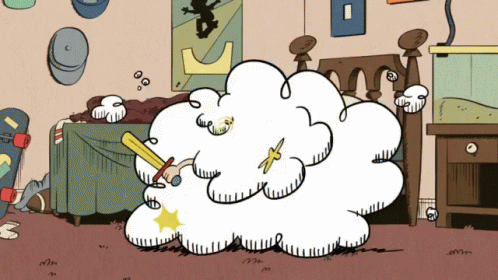
So just like with any team sport, you need:
- A Referee
- Rules of the Game
In Model UN the referee is the Chair - they moderate debate, make sure everyone has a chance to speak and keep things moving forward.
The Rules of the game are the MUN procedures, this ensures that everything moves along smoothly. To accomplish this you need:
- A Placard - You raise your placard if you would like to speak and the Chair can call on you.
- Tools of debate - This includes the Speakers list, Caucusing and Round Tables.
- A system of Points and Motions - The system that lets you and the committee decide which tools to use next.
When it all comes together, you have an amazing journey where you work together from a problem, all the way to a solution.

At a Model UN conference, it might look something like this.

Now that we know why procedure is so important, lets see how they work and how you can use each one to your advantage.
MUN Committees - The Order of Operations
While there are a few different tools of debate, just like with anything else, there's a time and place to use each of them.
- A MUN committee will start with the Speakers List.
- After, committee will move to a series of Moderated Caucuses, Unmoderated Caucuses and Round Tables. These will be suggested and voted on you in the committee.
This process will look a bit like this:

Next, let's look at each different type of debate format:
The Speakers List
The speakers list will always be your first stop in any MUN committee.
It gets the ball rolling and allows you to speak generally about the matter at hand. The speakers list is normally divided into two categories: the Primary Speakers list and the Secondary Speakers list, each serving a different purpose.
Primary Speaker's List
- Only used if there are multiple topics, if chosen to speak you can recommend a topic of discussion.
- Despite the name, it is generally less important than the Secondary Speakers list - and only really matters if you have a strong opinion on which topic you would like to start with.

Secondary Speaker's List
- Used to start discussing solutions for a topic, you can highlight issues that might be particularly important for you and introduce your initiatives.
- Opening Speeches
- You will deliver something called an Opening Speech during the Secondary Speakers List. It is one of the most important speeches that you will make, and is one of the few that you can really prepare in advance.
Learn how to write a great Opening Speech here.

The Caucus
Caucusing is by far the most important part of your committee, you will be spending most of your time either in a moderated or unmoderated caucus.
There are two varieties:
- Moderated Caucuses - This is a structured discussion where the Chair directs who speaks and for how long.
- Unmoderated Caucuses - This is a more relaxed session where you can speak freely, move around, and work together to draft resolutions. It encourages open discussion and collaboration on solutions.
Moderated Caucus
During moderated caucuses, you raise your placard for a turn to speak, and the Chair selects people.
These discussions enable a deep-dive into big issues, letting you share your views and make arguments for your country's stance. While a speakers list is more surface level and general, you are able to go deeper with each moderated caucus.
Moderated caucuses encourage both debate and collaboration. It gives you the chance to find support for your ideas as you listen to what other delegates have to say. It's also a great opportunity for passing notes to explain your ideas and finding people who share the same views as you.
Overall, moderated caucuses give delegates a chance to discuss topics thoroughly, exchange ideas, and identify people they would like to meet during an unmoderated caucus.


Suggesting Topics for a Moderated Caucus
When suggesting a moderated caucus, there are a few routes you can take:
- The Deep-Dive - At the start of your committee, discussions might not be very deep at all, overtime, as priorities emerge you can suggest topics that are more and more specific.
- The Opinion Poll - Topics that encourage delegates to discuss what exactly they think is important or what should be prioritized in solutions.
- The Round-up - A great tool if you don't have a specific topic in mind - you can give the committee a platform to summarize what they worked on during an Unmoderated Caucus or use it at the end of the day to highlight priorities for the next day.
If you want to learn more, check out our advanced Moderated Caucus Guide here.
Unmoderated Caucus
Unmoderated caucuses are a vital part of Model UN conferences, providing an informal setting for delegates to talk, negotiate, and make alliances.
Unlike moderated caucuses, unmoderated ones are more flexible, allowing for open discussions and teamwork. In unmoderated caucuses, you can freely move around, debate with other delegates, and discuss various agenda topics. This makes them very useful for building networks and forming alliances with similar countries.
You will often use unmoderated caucuses to work together on writing and refining resolutions, during an open discussion, it is much easier to negotiate and find compromise.
Overall, unmoderated caucuses are lively opportunities for you to collaborate, negotiate, and write your resolutions.

If you want to learn more, check out our guide on advanced Unmoderated Caucus skills here.
Round tables
The round table format is often used in smaller committees to facilitate inclusive discussions.
This structure allows all delegates an equal opportunity to speak and share their views, fostering an environment of collaboration and mutual respect. It works in the same way as a moderated caucus, but in this format, everyone is guaranteed a chance to make a shorter speech.
Unlike larger sessions where a few voices may dominate, the round table format encourages active participation from everyone, enhancing the quality of debate. By giving each delegate a chance to contribute, this approach promotes diverse perspectives and helps the committee work towards achieving consensus on important global issues.
This format is only really used in Crisis Committees.
Congratulations!
You have now completed Module 1 - By now, you have developed a solid understanding of the key skills and structures essential to navigating the Model UN world. You have key knowledge about the United Nations and its purpose, you understand the value of Model UN conferences, diverse committee types, and the role of a functional diplomat.
Now its time to start getting ready for your first conference, and to continue to expand your knowledge, refine your skills, and embrace new challenges.
Good luck and keep up the awesome work!



